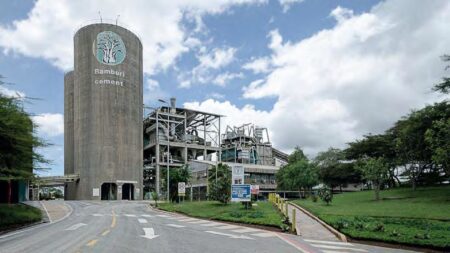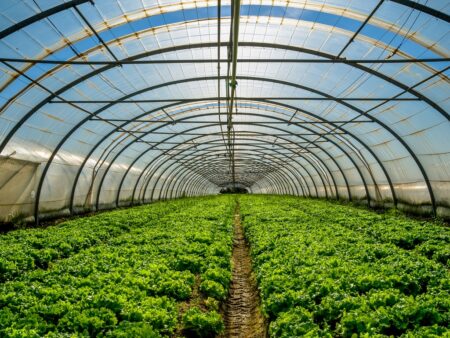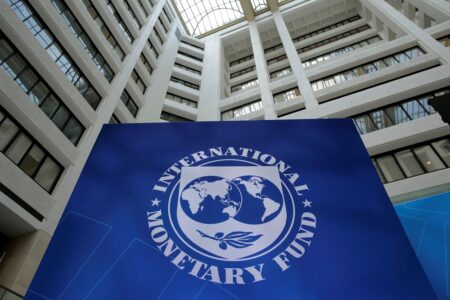- Burundi is the other country projected to record one of the fastest growing economies in 2024, according to the IMF.
- The Fastest Growing Economies in 2024 (real GPD growth) projections index places Rwanda ahead of her regional peers with a projected growth of 7.0% next year.
- Tanzania comes in closely with a projected growth of 6.1% while that of Burundi is forecast to grow at 6%.
Rwanda, Tanzania and Burundi will be the fastest growing economies in East Africa in 2024, the latest projection by the International Monetary Fund (IMF) indicates, with all countries posting economic growth above the world’s average.
The Fastest Growing Economies in 2024 (real GPD growth) projections index places Rwanda ahead of her East African Community (EAC) peers with a projected growth of seven per cent this year.
Tanzania comes in closely with a projected growth of 6.1 per cent while that of Burundi is projected to grow at six per cent.
The three are ranked seventh, 15th and 18th, respectively among the top 20 economies projected to record the highest growth in 2024, according to the IMF, where Sub-Sahara Africa accounts for more than half of the total number.
The three countries are expected to record growths above the region’s economic powerhouse, Kenya, and neighbouring Uganda, whose governments expect average growths of 5.5 per cent and 5.8 per cent, respectively.
In Sub-Sahara Africa, Niger and Senegal have the highest economic growth projections of 11.1 per cent and 8.8 per cent, respectively, with Libya closing the top three ranks with a growth projection of 7.5 per cent, slightly above Rwanda.
Other African countries projected to record fast economic growth are Côte d’Ivoire (6.6 per cent), Burkina Faso (6.4 per cent), Benin (6.3 per cent), The Gambia (6.2 per cent), Ethiopia (6.2 per cent) and Djibouti (6 per cent).
Read also: East Africa mulls shifting from linear to circular economy
Rwanda one of region’s fastest growing economies
Rwanda’s economy has tremendously recovered and recorded strong performances over the last decade, as the EAC landlocked country continues to remain an attractive investment destination.
Strong growth has continued to be recorded in the construction industry, mining and the services sector, with the latter now accounting for a much larger share of GDP than agriculture.
Rwanda has implemented a successful doing business reform agenda in order to create a favourable and competitive business environment. Energy and manufacturing also remain key drivers of the economy.
Over the last two decades, Rwanda has also positioned itself as one of the best luxury eco-tourism and conference destinations in the world, thanks to the iconic Visit Rwanda brand and the vibrant meetings, incentives, conferences and events (MICE) sector. Rwanda’s tourism industry has totaled over 1.5 billion in investments since 2000.
The agriculture sector, however, remains the single largest driver contributing about 35 per cent to the national GDP, and employing about 70 per cent of the population in Rwanda.
Overall, agriculture has been the main driver of growth and poverty reduction with increased commercialisation helping the sector account for up to 45 per cent of poverty reduction in the last decade.
Up to 81.3 per cent of all households (about 2,034,942 households) are food secure, have an acceptable diet, and use a low share of their budget to cover food needs, according to the World Food Programme (WFP).
The country’s finance minister and central bank governor, however, recently noted that despite the economy remaining on a strong growth trajectory, they foresee a temporary softening of economic growth, driven by needed tighter fiscal and monetary policies.
Read also: Rwanda charts new frontiers in Africa’s critical raw materials investment
Tanzania overly dependent on agriculture
In 2020, the real GDP of Tanzania grew by 4.8 per cent reaching $64.4 billion, from $60.8 billion in 2019.
This growth made it the second largest economy in East Africa after Kenya, and the seventh largest in Sub-Saharan Africa even as it remains a lower-middle income economy that is overwhelmingly dependent on agriculture.
Apart from agriculture, growth in Tanzania, which follows Rwanda in the ranking of projected fastest growing economies in EAC for 2024, is also driven by mining, tourism, industry and construction and service sector.
Other key sector sectors are manufacturing, wholesale and retail trade, transport and livestock. Tourism whose contribution to GDP fell from 10.6 per cent in 2019 to 5.3 per cent in 2020 due to the impact of the Covid-19 pandemic is rallying towards double digits.
Read also: Why Tanzania economy is on a steady rise to the top
Burundi hit hard by high fuel prices, forex woes
A landlocked country in East Africa, Burundi is a low-income economy with about 80 per cent of the population employed in the agricultural sector. Agriculture is the mainstay of the Burundi economy, making up over 40 per cent of GDP, mainly through coffee and tea crops.
Located in the Great Lakes region, Burundi neighbours Rwanda to the north, Tanzania to the east, the Democratic Republic of the Congo to the west, and Lake Tanganyika to the southwest.
While the Burundian economy continues to recover, economic buoyancy is impeded by shocks and multifaceted challenges, including domestic fuel shortages, low availability of foreign exchange for imports, and persistent inflation pressures, according to IMF.
The parallel exchange rate market premium has been widening since May 2023. IMF is backing a number of reforms aimed at supporting the economy recover from shocks, restore external sustainability, and strengthen debt sustainability, while creating fiscal space for accelerated and inclusive growth.
“Beyond a carefully calibrated macroeconomic policy mix, undertaking growth- and governance-enhancing reforms while being attuned to financial sector vulnerabilities will be essential to address the multi-dimensional challenges,” IMF noted.
An IMF team led by Ms. Mame Astou Diouf, Mission Chief for Burundi visited Bujumbura during September 25−29, 2023 and held follow-up discussions during October 2−4 with the Burundian authorities on recent developments.
This was after the executive board of the IMF on July 17, 2023, approved a 38-month arrangement under the Extended Credit Facility with access of Special Drawing Rights (SDR) 200.2 million (or about US$ 261.7 million, representing 130 percent of quota).
“Discussions held during the mission covered recent macroeconomic and policy developments, progress towards reform implementation under the ECF-supported program, and near-term macroeconomic prospects and policy plans.
Inflation pressures have continued with average inflation standing at around 29 percent during January−August 2023, driven mainly by food prices, despite easing somewhat during March−July.
The beneficial effects of the new agricultural harvest on food prices were outweighed by high import prices owing to the war in Ukraine and domestic factors.
“With the support of the new ECF arrangement, the Burundian authorities have committed to a broad-based macroeconomic reform agenda aimed at tackling key challenges,” IMF said.
Governance and structural reforms will ensure a business environment conducive to private sector-led, job-rich, and inclusive growth, according to IMF.
Read also: Crisis-saddled Burundi gets $261M IMF loan to aid recovery
Overall EAC economic growth
Overall EAC economic growth is expected to rebound in 2024 and is set to be broad based, according to IMF. Importantly, governments in many countries are working hard to address macroeconomic imbalances.
Fiscal deficits, for example, have been narrowing, helping stabilise public debt in most countries, it noted. In Kenya, the economy is expected to remain strong and expand by 5.5 per cent in both 2023 and 2024, and 5.4 per cent in 2025, the country’s National Treasury said.
Uganda’s real GDP growth on the other hand is expected to pick up to 5.8 per cent in 2024, following a slowdown to 4.6 per cent in 2023. The IMF sees the East Africa region’s real GDP growing by 5.0 per cent in 2023 and accelerating to 5.7 per cent in 2024.
These outcomes are all the more encouraging given strong external headwinds, such as slower international demand, expensive and difficult access to finance. “Still, it is too early to celebrate as many challenges lie ahead,” IMF said.
The funding squeeze is not over, and while debt levels have stabilised, the cost of repayments has increased, and high debt service ratios to revenue risk crowding out vital development spending. Inflation is also still high with one third of countries having double digit inflation.
“Policymakers in the region face some of the most daunting policy challenges in the world. They must continue to maintain macroeconomic stability amid limited resources and development needs as they continue to face frequent shocks and fragility,” IMF said.
Against this backdrop, a strong focus on four interrelated policy priorities can help. First, addressing inflation in countries with elevated and rising inflation. Further tightening might be warranted, IMF noted, with countries where inflation is both falling and on track to meet their target could pause monetary policy tightening.
“This matters, of course, because of the hugely adverse effect that high inflation has in eroding the incomes of the poorest people in society,” it said.
Second is reducing debt vulnerabilities while creating space for development spending. According to IMF, this requires a delicate balance between raising domestic revenues and reforms to foster growth.
Third is allowing the exchange rate to depreciate where needed, noting that avoiding depreciation pressures at the cost of exhausting scarce international reserves and eroding competitiveness often ends up causing more challenges later on.
Finally, IMF has advised on continuing to increase investment in priority areas: health, education, infrastructure – that’s growth enhancing.
Read also: EAC leading the pack in Africa’s growth forecast










